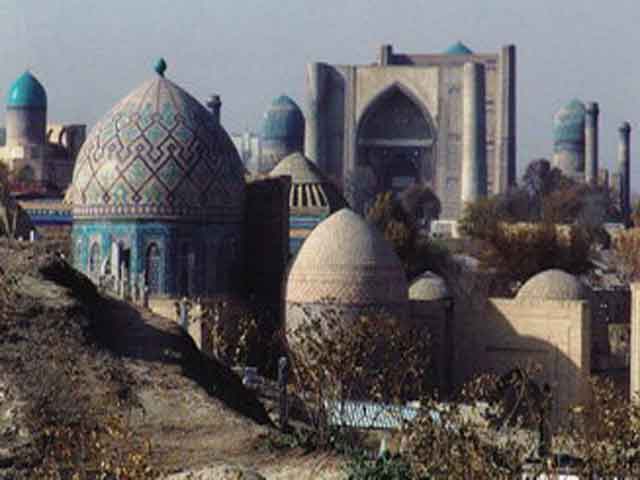One of the most ancient cities under the sun, Samarkand is situated deep in the Central Asian interfluve.
The ancient city is located in the Zerafshan oasis, inhabited from the upper Palaeolithic period (between 40 and 15 thousand B.C.). Numerous Mesolithic and Neolithic sites, as well as sites of the Bronze Age were revealed around the city. In the 3rd-2nd thousand B.C., the Zerafshan valley became one of the centers of Indo-lranian civilization. At the shift of the 2nd-1st thousand B.C., the Eastem-lranian tribes settled down here for good, as well as in the other Central Asia oases. The first centuries of the first thousand B.C. were marked by a significant cultural event - sermons of Zoroaster and creation of sacred Zoroastrian book ’’Avesta''. The ancient Iranian legends say that Samarkand was founded by Kavus, the second king from the Kavianid dynasty. In days of Kavus’s son, Siyavush, the city was extended, and his grandson Qai-Khusraw transferred the Fire Altar to Samarkand. Zoroaster started preaching here. According to the epic legends, Siyavush was killed by the Turanian king Afrasiab, whose name was given to the ancient hill in Samarkand.
At the turn of the 8th-7th centuries B.C., in the lands between the Syr Darya and Amu Darya, the proto-urban culture was forming. Large state federations arose in Bactria and Khorezm, which contacted Assyria, New Babylon and Indian principalities. Sogdiana (Sogd). including valleys of the Zerafshan and Kashka Darya rivers, was a part of ancient Bactria. The sources inform that the Bactrian kingdom became a target of Assyrian aggressive policy and finally was subordinated to Assyria. In the war between Media and Assyria, the Bactrians crossed over to Media. In the middle of the 6th century B.C., the Persians, having founded the great Achaemenkj empire, defeated the Median kingdom. Though the Persian king, Cyrus fell in the steppes of Central Asia, Sogdiana was integrated in the Achaemenid empire at the last third of the 6th century B.C. Alongside Khorezm and Partnia. it formed Satrapy XVI.
The majority of scholars identify the capital of Sogdans - Marakanda with ancient Samarkand. In the 8th-earty 7th centuries B.C., the separate settlements on the Afrasiab hill were encircled by common defensive ine. This settlement occupied more than 200 hectares in a term of a triangle. Bluffs of Siab's and Obi-Mugon’s anabranches protected it in the north and east, and deep ravines - in the south and west. In the Achaemenid period, the oty was encircled by a new massive wall with internal corridor and towers. The citadel with satrap's palace was additionally fortified. Dwelling and industrial quarters alternated with extensive barrens, squares and hauses (reservoirs).


